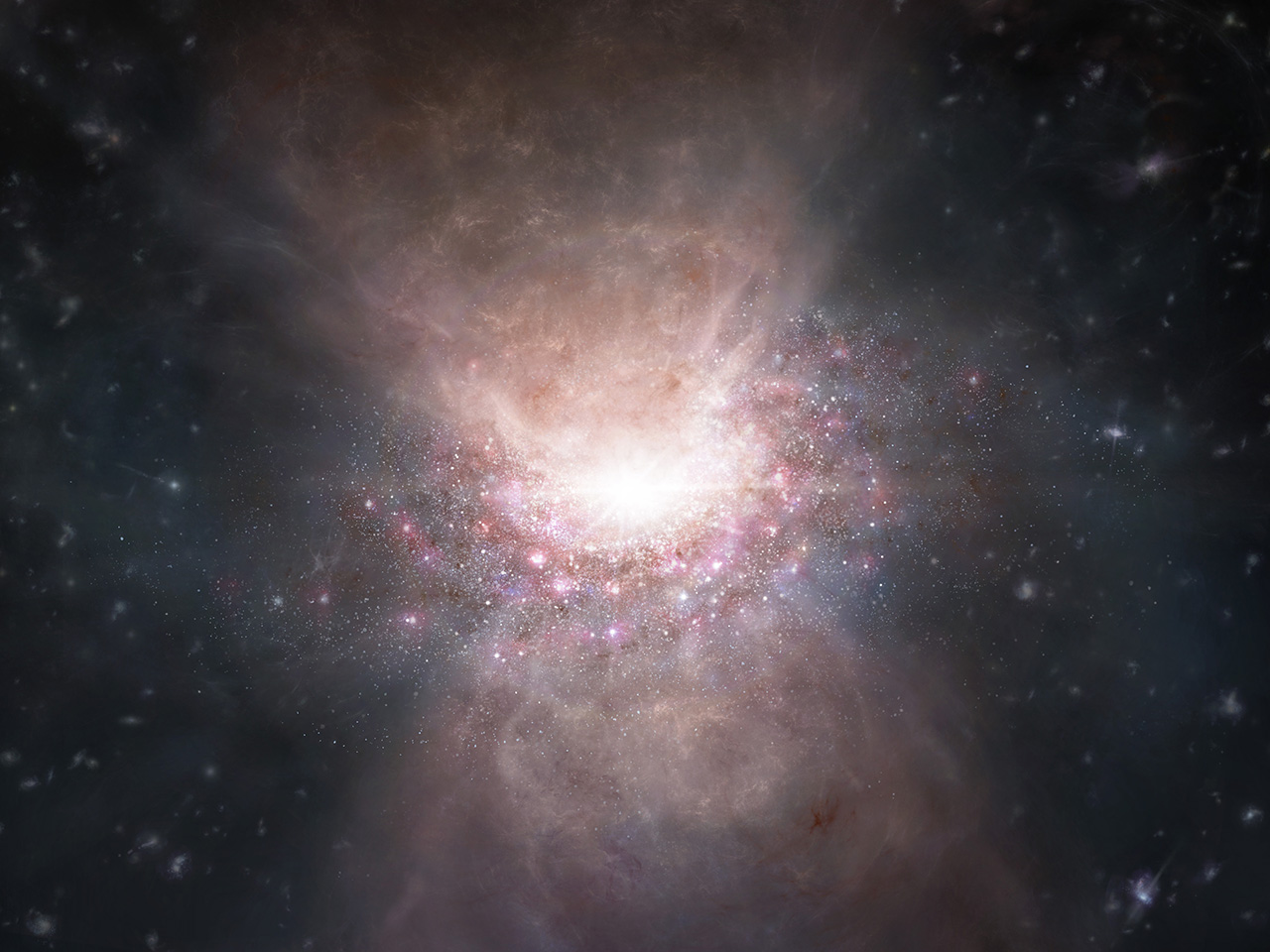
Astronomers have found the earliest known example of a galaxy hosting an active supermassive black hole expelling large quantities of molecular gas. This outflow will suppress star formation in the galaxy. These results will help us to understand how black holes and galaxies have evolved together over the history of the Universe.
Quasars, supermassive black holes gobbling up matter in the early Universe, are the subject of intense research. Theoretical models attempting to explain them, predict that quasars should drive large outflows of molecular gas. As the material for star formation, molecular gas is important in the evolution of a galaxy, so quasars are expected to affect the rate of star formation in their host galaxy. But this has been difficult to prove because all quasars are located far away.
Due to the finite speed of light, the light from an object located 1 billion light years away must travel for 1 billion years to reach Earth. When we observe that light with a telescope, it shows us what the object looked like when that light started its journey, 1 billion years ago. So looking at distant objects like quasars allows astronomers to look back in time to the conditions in the early Universe.
A team of researchers led by Assistant Professor Dragan Salak at Hokkaido University, Assistant Professor Takuya Hashimoto at the University of Tsukuba, and Professor Akio Inoue at Waseda University, used ALMA (Atacama Large Millimeter/submillimeter Array) to study molecular gas movement in J2054-0005, one of the earliest (most distant) and brightest quasars. Located in the direction of the constellation Aquarius, J2054-0005 was active when the Universe was less than 1 billion years old. ALMA is the only telescope in the world that has the sensitivity and frequency coverage to detect molecular gas motion in the early Universe.
The team was able to confirm that molecular gas is being expelled from the galaxy, as predicted. They measured the flow rate of the outflow and determined that it is fast enough to deplete the supply of molecular gas and limit the rate at which new stars can form in the galaxy. This is the first evidence for star formation suppression caused by a molecular gas outflow from a quasar-host galaxy in the early Universe.
Detailed Article(s)
Gas on the run - ALMA spots the shadow of a molecular outflow from a quasar when the Universe was less than one billion years old
ALMA
Release Information
Researcher(s) Involved in this Release
- Dragan Salak (Institute for the Advancement of Higher Education, Graduate School of Science, Hokkaido University)
- Takuya Hashimoto (Tomonaga Center for the History of the Universe (TCHoU), Faculty of Pure and Applied Science, University of Tsukuba)
- Akio Inoue (Faculty of Science and Engineering, Waseda University)
- Darko Donevski (Astrophysics Division, National Centre for Nuclear Research (NCBJ))
Coordinated Release Organization(s)
- Hokkaido University
- University of Tsukuba
- Waseda University
- National Astronomical Observatory of Japan
Paper(s)
- Dragan Salak et al. "Molecular outflow in the reionization-epoch quasar J2054-0005 revealed by OH 119 μm observations", in The Astrophysical Journal, DOI: 10.3847/1538-4357/ad0df5






